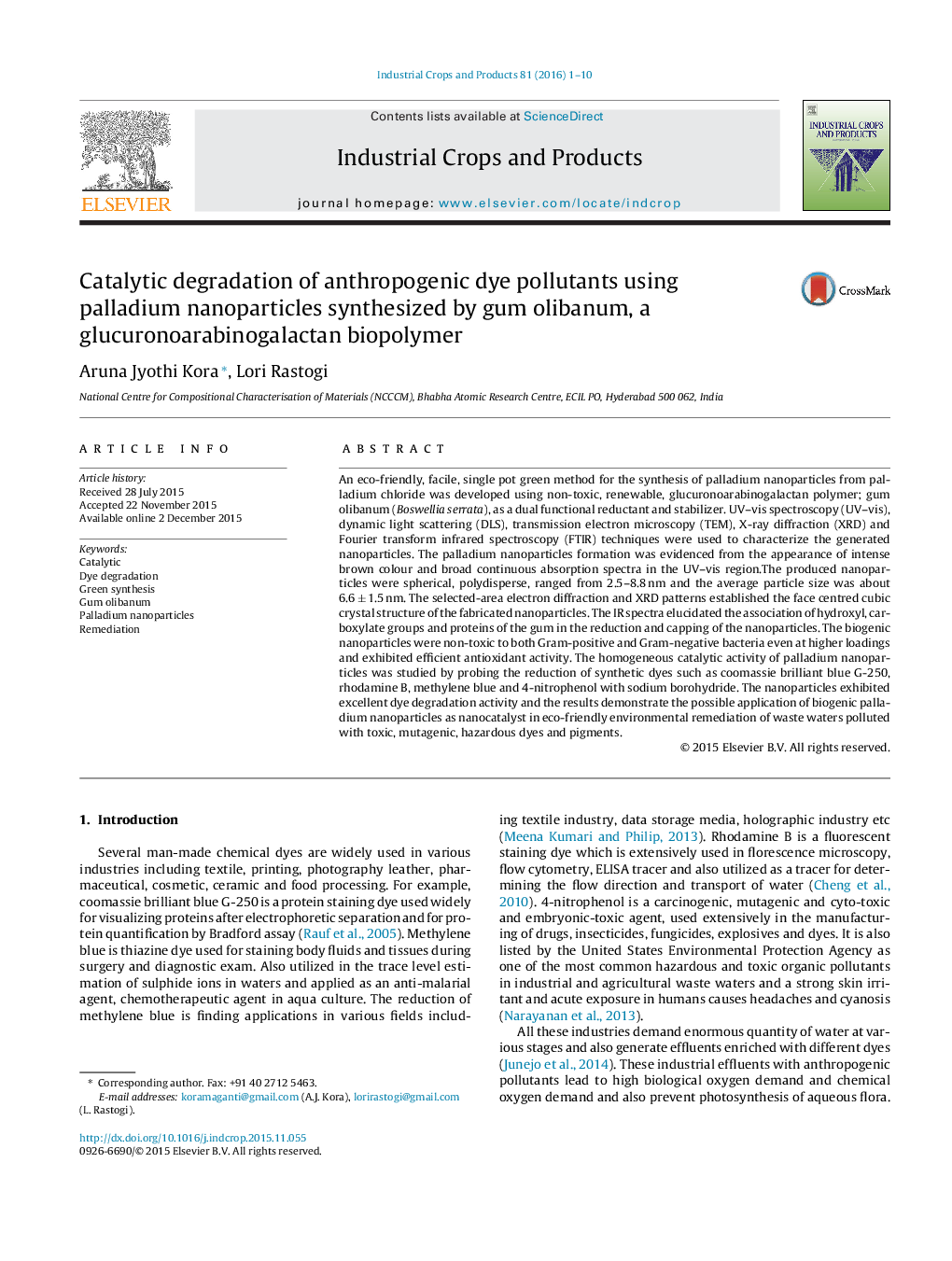| کد مقاله | کد نشریه | سال انتشار | مقاله انگلیسی | نسخه تمام متن |
|---|---|---|---|---|
| 4512448 | 1624829 | 2016 | 10 صفحه PDF | دانلود رایگان |
• Green palladium nanoparticles of 6.6 nm size were produced with gum olibanum.
• Produced nanoparticles were spherical, polydisperse and crystalline.
• Reduction and capping of NP mediated by hydroxyl & carboxylate groups of gum.
• Nanoparticles were non-antibacterial and exhibited efficient antioxidant activity.
• NP showed excellent degradation activity on mutagenic/hazardous dyes as catalyst.
An eco-friendly, facile, single pot green method for the synthesis of palladium nanoparticles from palladium chloride was developed using non-toxic, renewable, glucuronoarabinogalactan polymer; gum olibanum (Boswellia serrata), as a dual functional reductant and stabilizer. UV–vis spectroscopy (UV–vis), dynamic light scattering (DLS), transmission electron microscopy (TEM), X-ray diffraction (XRD) and Fourier transform infrared spectroscopy (FTIR) techniques were used to characterize the generated nanoparticles. The palladium nanoparticles formation was evidenced from the appearance of intense brown colour and broad continuous absorption spectra in the UV–vis region.The produced nanoparticles were spherical, polydisperse, ranged from 2.5–8.8 nm and the average particle size was about 6.6 ± 1.5 nm. The selected-area electron diffraction and XRD patterns established the face centred cubic crystal structure of the fabricated nanoparticles. The IR spectra elucidated the association of hydroxyl, carboxylate groups and proteins of the gum in the reduction and capping of the nanoparticles. The biogenic nanoparticles were non-toxic to both Gram-positive and Gram-negative bacteria even at higher loadings and exhibited efficient antioxidant activity. The homogeneous catalytic activity of palladium nanoparticles was studied by probing the reduction of synthetic dyes such as coomassie brilliant blue G-250, rhodamine B, methylene blue and 4-nitrophenol with sodium borohydride. The nanoparticles exhibited excellent dye degradation activity and the results demonstrate the possible application of biogenic palladium nanoparticles as nanocatalyst in eco-friendly environmental remediation of waste waters polluted with toxic, mutagenic, hazardous dyes and pigments.
Journal: Industrial Crops and Products - Volume 81, March 2016, Pages 1–10
